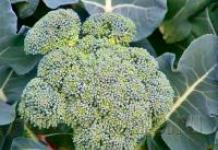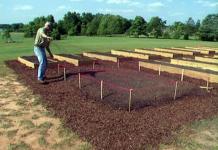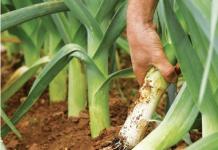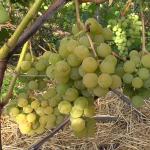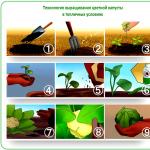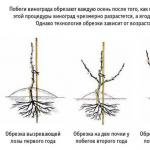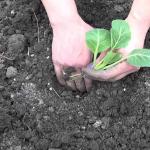Any gardener, even non-professional viticulture, knows that this culture is very thermophilic, does not tolerate frost. If the one-year-old recruits are affected by the fall in temperature, they will die. Perennials are somewhat more tolerant, but low temperatures can impair fruiting and longevity.
Based on temperature norms, growers subdivide varieties into covering and non-covering varieties. For greater certainty, some gardeners immediately purchase winter-hardy non-covering grape varieties in order to protect themselves from unforeseen circumstances. There is no question here that they can survive extreme frosts, but in a moderate winter climate they will quite survive until spring without much damage.
general information
There are a little more than 20 frost-resistant grape varieties. At the same time, it is customary in viticulture to base the choice on the level of sweetness, the degree of frost resistance, and ease of care. Considering that the majority of gardeners live in the Middle lane, many choose wine uncovered best grape varieties.
At the same time, the older the grapes, the later you need to cover it, and remove the oilcloth as soon as possible. The plant will harden and in the future will do without shelter.
Winter in the garden
Professionals set the maximum frost resistance up to -33 ° С, but the maximum mark is up to -28 ° С. Even so, it is highly undesirable to let the plants supercool to such frosts. Therefore, in the area where winter behaves unpredictably, it is recommended to remove the vines from the trellis and place them on the earth's surface. This is useful because the buds will not have the opportunity to wake up prematurely, which will keep the grapes uncovered from freezing.
Important! The same winter-hardy grapes can manifest themselves differently in different climatic zones. For example, in the Kuban, he may show himself differently than in Siberia.
Among the varieties most preferred by winegrowers of Central Russia, the Urals, Siberia, the Moscow Region or the Moscow Region are the so-called Isabella varieties. They differ and attract gardeners in that the fruits are sweet. Another reason for choosing them is that they do not require special care. Only at some moments you can water them in the summer, and in the spring - lightly fertilize with compost or top dressing containing saltpeter.
Important! Covering frost-resistant grapes require more care. For the season, he needs at least 3 top dressing, weekly watering and frequent pruning, as well as treatment for pests and diseases.
Winter-hardy varieties have the ability to regenerate. The most favorable areas for their planting are the southern part of the garden.
Uncovered grape varieties most preferred by gardeners:
- Ontario is originally from the USA and was first bred by crossing Diamond and Winchel varieties. The mass of bunches can reach 300 g. The grapes are round, yellowish in color, the taste is characterized as sweet, with sourness.
- The Amethyst variety is an equally good choice, since it is immune to many diseases, and the maximum tolerated temperature is -34 ° C. The plant has powerful vines, which begin to produce fruits as quickly as possible, reaching a mass of 800 g. The grapes are characterized as juicy, dark blue in color, and have a sweetish taste.
- Variety Isabella - the most famous and favored by winegrowers. The vine can form up to 4 brushes during the season. The plant tolerates transportation without much difficulty. Grapes with a size of 2 cm, a weight of 4 g and a blue tint are used mainly for making wine. Some gourmets preserve compotes from them for the winter.
- The Lydia variety first appeared in the USA. The harvest comes in autumn. Large, almost translucent berries, slightly pinkish in color, with dense skin are removed from the bush.
- Variety Valiant stands out from this list in that it can tolerate temperature drops down to -46 ° C. Grows fast, medium sized clusters. The grapes are small, blue in color, there are seeds inside. Strawberry flavor and medium sugar content are also noteworthy. Gardeners prefer to make jelly or wine from it.
- The Mure Earli variety is characterized as a variety that can withstand temperatures as low as -35°C. Berries taste similar to Isabella. But here it is worth remembering that in early autumn he needs pruning.
- Kay Gray matures early. Clusters of small size. Bushes can withstand temperatures as low as -41°C. Golden grapes. Most often goes to the production of wines.
Variety Amethyst
The best non-covering frost-resistant grapes
Variety Isabella - the best non-covering grapes for arbors. It began to be actively grown in the 50s of the last century. The main characteristics of the Isabella variety:
- the vine can reach a length of 4 m, tolerates temperature drops to -28 ° C, is immune to fungal diseases;
- fruits ripen on average within 165 days;
- small bunches weighing 140 g, but if properly cared for, brushes increase in size;
- grapes are round in shape, the flesh inside is slightly slimy, reaches a weight of 4 g, a sour-sweet taste and aroma of strawberries are noteworthy, the outer shell is strong, black.
Variety Isabella
Important! Variety Isabella is inappropriate for regions where the air temperature drops lower than in Central Russia.
The Lydia variety is very popular among winegrowers, which is characterized as:
- mid-season variety, resistant to frost;
- ripening period - 155 days on average, harvest time - late summer - early autumn;
- bushes are small, leaves are not thick, flowers of both sexes;
- brushes are wide in the shape of a cone, medium in size, reach 150 g;
- Lydia gives small, round fruits: the pulp is slimy, the taste of strawberries, the skin is dense, dark red.
The Ontario variety, which is the result of crossing the Diamond and Unchel varieties, reaches a medium size in adulthood. Its other characteristics:

Interesting! The description of the Ontario grape states that the variety is most resistant to dangerous diseases, in particular, to mildew.
There are many advantages of uncovered grape varieties: an increased level of frost resistance, a sweet and sour taste. Among the minuses are the small sizes of clusters and berries.
But which of the grape varieties to choose, each gardener decides for himself. If he does not want to bother with a covering look (often water, process, cut, prepare for winter), then the advice is obvious - it is better to buy frost-resistant grapes and not worry about frosts that can ruin the crop!
Sweet grapes - a concentrate from the sun and heat. A hundred years ago, a cultivated fruit-bearing vine grew exclusively in the south, and its clusters were considered exotic even in the middle lane. Industrial varieties could be grown in areas with cold winters, but sweet table varieties remained too tender and could not stand the harsh climate. Only purposeful selection and perseverance of winegrowers made it possible to obtain frost-resistant grapes at the end of the last century. Varieties and hybrids that can tolerate cold are becoming more and more every year, and their taste characteristics are constantly improving. Now the sunny berry is grown even in Siberia.
History of creation and selection features
The cultivation of frost-resistant grape varieties began under the guidance of IV Michurin. At the beginning of the 20th century, the first samples appeared that really endured winter frosts and return spring frosts. Russian Concord, Arctic, Buytur, Northern White, Metallic - these are varieties representing the Michurin selection. The scientist-breeder Ya. I. Potapenko laid the foundation for the development of disease-resistant and first non-covering varieties: Suvorovets, Stepnyak, Medovy, Festivalny, Saperavi Severny.
northern white
In the 60s of the 20th century, the promotion of viticulture to the north was continued in Orenburg by the famous breeder Shatilov. The most valuable frost-resistant hybrids were obtained by breeding wild vine species collected in the Urals and Siberia. This was reflected in the names of the varieties: Amur early, Amur black. The enormous work of breeders and enthusiasts has led to the fact that grapes in areas with severe winters are now grown on an industrial scale. At the same time, its productivity is not inferior to southern plantations.
To date, zoned non-covering varieties have been created for the Urals, the Far East, Primorye, and the Non-Black Earth Region. Selection work is underway in the Smolensk region, Krasnoyarsk, Altai. The progenitors of frost-resistant grapes are hybrids of European and American varieties with Amur wild species, which are not only adapted to wintering in frost conditions below -30 ° C, but also need them. They endure warm winters with frequent thaws much worse than severe cold.

AmurSha (Amur hybrid Shatilov)
Non-covering forms of culture are relevant when grown in the open ground of the Middle Strip and the Moscow Region. Here the temperature in winter also regularly drops below -25°C. The climatic conditions in such a vast area are very different, therefore, non-covering hybrids in some areas require protection in winter, and covering hybrids can be cultivated without warming in others.
Frost-resistant varieties differ from their southern counterparts in their ability to regenerate dead tissues. Barren buds are in the ground and are activated when old roots die, replacing them with new ones. Vigorous growth, characteristic of many hybrids, allows you to replace the dead parts of the plant in one season. New varieties form many ovaries, their number has to be regulated. The winter hardiness of bushes suffers from congestion with fruits.
The sugar content of berries, which previously did not exceed 17%, has reached 24% in recent years in some new varieties. The northern fruits are somewhat inferior to the southern ones in size, and the weight of the bunch is usually less. But selection work continues and there are more and more table large varieties.
The best frost-resistant grape varieties
Grapes can be table and wine. Technical varieties with small berries and a small bunch may be of interest as an arched form, for covering large surfaces (arbors, patios, sheds). Most large table varieties still require removal of the vines from their supports and shelter from frost. Therefore, for the formation of a high bush, winter hardiness is an important indicator, because it is more difficult to prepare such a form for winter.
Description of the most popular varieties in temperate climates and the Moscow region:
Lydia
This is a table-technical variety, an American hybrid of Isabella. Tolerates frost down to -30°C, not susceptible to gray rot. Great for covering arches and awnings. The bunch is small, the berries are pink with a pleasant taste, they are used in winemaking.

Lydia (Pink Isabella)
Aleshenkin (No. 328)
Very early, dessert, conditionally covering grapes. It is distinguished by a large bunch (more than 1 kg), high yield and excellent taste. The berries are conical, yellow-green, contain few seeds and do not fall off the bush until frost.

Aleshenkin
Alpha
Bred in the Far East, but distributed mainly in the Moscow region and Primorye. Differs in violent growth, the increased productivity, well winters. Belongs to technical varieties, used for landscaping, shoots reach 9 m in length. The bushes are very decorative. Berries have a sugar content of about 19%, black with an easily detachable skin.

One or the Amur breakthrough
The most popular of the Potapenko hybrids. Does not freeze at temperatures of -40°С. The vine is powerful, the clusters are dense, dark purple with a raspberry tint. Resistant to rot, diseases, pests. Used in the production of wines and juices.

Amur breakthrough (Potapenko-7)
Crystal
One of the hybrids based on Amur grapes (Hungarian selection). Shows winter hardiness down to -29°C, complex-resistant to diseases. The bush is low, the cluster is conical. Berries with a high sugar content, juicy, left on the bush, ripen, do not crack.

Crystal
Sharov's riddle
It bears the name of a famous breeder-vine grower. Does not require shelter down to -34°C. The berries are dark blue with a pronounced aroma of strawberries and sugar content up to 22%. The yield is average. The variety is self-pollinating, there is no pea in clusters. The vine is thin, vigorous, matures quickly. With high humidity, the bushes are prone to oidium.

Sharov's riddle
Skuin 675 or Moscow Steady
A complex hybrid that is not susceptible to major grape diseases. Variety for growing in the north, bred in Moscow. Clusters are small with amber fruits, closely adjacent to each other, with a pineapple aroma and hints of nutmeg. A vigorous bush can withstand a load of up to 120 eyes. All shoots are able to bear fruit, each one lays at least 2 bunches. Imported for cultivation in Minnesota (USA), where it is used to make high-quality wines.

Muscat white Shatilova
Muscat white (Shatilova)
It has very large decorative leaves, bunches are poured up to 1 kg. Vigorous and high-yielding variety. In the middle lane it ripens in early September. The berries are oval, large, with high taste characteristics. In areas north of Yekaterinburg, the hybrid should be protected from severe frosts.
Grapes that do not require shelter for the winter in the middle lane may be covering for more northern regions. You should carefully study the characteristics of the variety before planting and focus on the lower values of winter temperatures in the region.
Particularly resistant non-covering hybrids
There are grape hybrids whose bushes are able to withstand especially low temperatures and at the same time show accelerated growth rates. The fruits ripen quickly and require less heat to do so. This makes it possible to grow these crops in high-risk areas with harsh winters and unpredictable summer weather.
- 1. Reline Pink Seedles - the most frost-resistant American hybrid (up to -27 ° C). The fruits are pink, pitted, with the aroma of labruska, suitable for drying, making juices, wine and consumed fresh. Ripening terms are very early (105 days). Permissible load - 50 eyes per bush.
- 2. Taiga emerald - a hybrid from Primorsky Krai, obtained from the American variety Minnesota. Berries are consumed fresh, their sugar content reaches 19.5%. The shoots of this high-yielding variety have time to mature in a short autumn. It has high frost resistance and is tolerant to mildew.
- 3. Valiant is a super-hardy species, the vine can withstand temperatures down to -47°C. Ripening early. The berries are black and blue with large seeds and a fruity aroma. Some samples had strawberry flavor. Clusters of moderate density, able to stay on the bushes for a long time.
- 4. Triumph - American table variety with vigorous shoots, conical long tassels and oval large fruits. Ripens in the second half of August. Able to increase varietal indicators with age.

Non-covering varieties of American origin also include: Kay Gray, Moore Earley, Venus. Euroamerican hybrids have been bred to be resistant to phylloxera, which makes them stand out when choosing a variety for planting. Frost resistance in such varieties is slightly lower - from -30 to -34 ° C, but tolerance has been achieved to almost all diseases that plague vineyards.

Grape variety Kay Gray
Some European hardy species:
- Lando Noir;
- Louise Swenson;
- Somerset Seeds;
- Prairie Style.
They are not inferior in quality, and in some positions even surpass foreign relatives of grape varieties bred in Russia from local relics through selection and selection. The small-fruited Amur liana has turned into many varieties in the hands of breeders, which at the same time have frost resistance, excellent presentation and high taste.
Amur grapes grown, for example, in the Smolensk region, show a sugar content of 21.4%. Its vine tolerates frosts below -40°C during the snowless period in open vineyard conditions.
- hybrids of Vaskovsky (No. 5 and No. 6);
- Shatilov hybrids (from 2 to 15);
- Latvian variety Gulya;
- Khasanskiy Bousa and Khasanskiy sweet;
- Cheryomushka Siberian;
- Bashkir early.

Hasansky Bousa
Many other varieties for each region are zoned or obtained through selection by amateur winegrowers and specialized institutes. But the high characteristics of the hybrid still do not guarantee successful cultivation and a bountiful harvest. Along with the unique qualities, northern grapes are distinguished by the principles of care, pruning and other features.
Features of growing non-covering varieties
The resistance of the vine, even in the most frost-resistant specimens, does not appear immediately. The first two years, the bush should be removed from the supports and laid on the ground for shelter before the cold. After the third season, one whip is left uncovered for testing. If the test is passed and the vine has overwintered successfully, the bush can overwinter without insulation. Because of this feature, all resistant varieties are considered to be conditionally non-covering.
There are several other features in agricultural technology:
- 1. Northern grapes have a high yield. If you do not adjust the fullness of the bush, then the harvest will be large, and the winter hardiness of the plant will decrease. The vine will not have time to ripen, and the bush may freeze.
- 2. More difficult than frost, such hybrids endure thaws. With a prolonged increase in temperature, the plant begins to vegetate and loses varietal resistance to cold. A bush accustomed to frost at -30 ° C may die at -12 ° C.
- 3. Varieties are characterized by violent growth. Bushes require regular pruning, removal of stepchildren, thinning and pinching of lashes. Otherwise, the grapes begin to "degenerate" and lose varietal characteristics. The abundance of branches in summer inhibits the ripening of clusters.
- 4. Pollination is an important stage of laying the crop. Before buying seedlings, you should clarify whether the plant needs pollinators and what kind. Some hybrids require help during flowering - spraying, cross-pollination, shaking off scaly caps.
The north of Russia has unique data for growing grapes. Already starting from the Urals, during the winter there are no pests in the soil that can infect shrubs. Frost-resistant varieties during breeding received increased resistance to the main grape diseases: mildew, oidium, phylloxera, rot and fungal infections. Therefore, chemical treatments of vineyards can be minimized.
Experienced growers are advised to exclude mineral mixtures from dressings and use organic matter. Thus, the grown crop will be environmentally friendly and safe, which is impossible to achieve in the south with an abundance of insects and diseases.
Many gardeners have learned to grow grapes in the conditions of the Far East, in the Urals, in Siberia, and the Moscow region has long been considered a risky region for this crop. Every year the collection of frost-resistant and ultra-early varieties for any climate is replenished. In many areas previously inaccessible to the southern plant, it is now cultivated by hectares. A further goal of dedicated breeders are large table varieties that, without shelter, will be able to survive even harsher winters and give their owners a sweet and fragrant harvest.
This sweet berry contains a huge amount of natural sugars, mainly fructose and glucose. The chemical composition of the product includes a huge number of useful substances: vitamins, minerals, enzymes. About half of the total world plantation area is occupied by this crop, and for good reason! Thanks to this composition, grapes have medicinal properties and are used as a prophylactic against many diseases. The berry contains a large amount of sugar, thanks to which hunger is perfectly satisfied, and a person is filled with energy. The calorie content of 100 g of berries is from 43 to 64 kcal, depending on the variety. What else is good for grapes? Berries contain many trace elements and minerals we need: potassium, cobalt, manganese, nickel, zinc, chromium, boron, etc. They serve as structural components of enzymes, vitamins, hormones, proteins and other equally important complexes. The first vineyard was planted in Astrakhan, and this happened in 1613, it was at this time that this crop began to be grown on the territory of Russia. Grapes are one of the most common agricultural crops, the abundance of various varieties of which is incalculable. Each of us daily meets with a berry, as this product is widely represented in any category of food products, and enjoys it with pleasure. And special lovers of grapes cultivate this plant in their own summer cottage. At a time when a lot has been written about representatives of warm and temperate climatic zones, winter-hardy grape varieties still remain in the shadow of their southern counterparts. For most grape lovers, it remains a mystery which winter-hardy varieties are most popular in Central Russia.
Frost-resistant grape varieties
Freezing of wood of one-year-olds most often leads to their death. Frost resistance of the vine is at its maximum in the middle of winter, during a period of complete dormancy. When the period of sap flow begins, the eyes become vulnerable and can be easily damaged by return frosts. Frost resistance is determined at experimental stations or breeders' sites. To do this, they measure the temperature all winter and see what frosts the young bushes of this variety could survive. The indicator is approximate. In practice, the bushes do not withstand the declared frosts.
Among frost-resistant varieties, they differ: weakly resistant (up to -20 ° C), medium resistance (up to 22 ° C), relatively resistant (-24).
Frost-resistant varieties are called varieties that must survive up to -27 ° C. The frost resistance indicated in the description of the variety does not mean that uncovered bushes can survive several months without loss at this temperature. It indicates that the ground part does not freeze slightly or slightly freezes when the temperature drops for several days. Usually, the immature parts of the shoots die, and those that remain after pruning are not damaged.
For gardeners who cover all grape bushes, the frost resistance index does not really matter. It only adjusts the degree of protection. But often bushes are planted near arches or arbors. Usually these are high-standard varieties, the sleeves of which are difficult to remove and attach on supports every year. In such cases, frost-resistant grapes are used.
In addition to the term "frost resistance" there is also "winter hardiness". This is the ability to withstand several factors that negatively affect survival, in sum. This includes humidity, snow cover thickness and other factors. Usually varieties that are not damaged by frost are frost-resistant.
Frost-resistant Buffalo grape variety
Grape variety with American roots. The result of hybridization of varieties "Herbert" and "Watkins". Bred at Cornell University, New York. It is considered the best variety in the isabella group due to its high yield, large and attractive cluster and excellent taste. Although there are growers who have a different opinion about Buffalo.
Bushes vigorous. The vine is dark brown. Leaves with felt pubescence, large. Clusters are medium, up to 0.5 kg, round-conical shape, classic isabella look. Berries weighing up to 5 g, dark blue, almost black, very tasty (relative to the isabelle group). The variety is extremely productive. On arched formations, up to a centner of berries are obtained from a bush. In our climate, it ripens in early September. In winter, it does not need shelter. Mildew is affected in a weak degree. Recommended 7-9 eye pruning. Cuttings take root extremely poorly.

Frost-resistant grape variety Isabella
The most popular winter-hardy variety bred since the times of the USSR. Culture loves a temperate climate more, but grows successfully in many regions. An uncovered grape variety is suitable for the Chernozem region, and is most often in demand by winemakers. The fruits are rounded, slightly elongated, about 20 mm long. The dark blue skin is covered with a white coating. The pulp is slimy, sour with a tart aftertaste, but saturated with a pronounced aroma.

Frost-resistant grape variety Lydia
A good non-covering grape variety for the Krasnodar Territory and other regions with a temperate climate. In the northern regions, the vine is covered for the winter. Berries of a rounded shape become brown-red when ripe. The fruits are famous for their sharp pleasant aroma and are ideal for making wine, juice. Harvest ripening occurs after 150 days.
Advice! The winter-hardy Lydia variety is excellent for making wine vinegar.

Frost-resistant grape variety Aleshenkin
Aleshenkin - early dessert grapes, uncovered. It is also called Alyosha or No. 328. It has a great taste and a beautiful appearance - large clusters up to two kilograms, the berries are cone-shaped, yellow-green in color.
Advantages:
- very early;
- does not require special care and special agricultural technology;
- cuttings are well rooted;
- good yield without top dressing;
- few seeds in berries;
- excellent taste;
- the berries stay on the vine in frosts down to -25°C.
Flaws:
- the underground part is unstable to frost;
- berries need a growth stimulator, otherwise peas are likely.

Frost-resistant grape variety Ladies' fingers
It has a unique shape of berries that look like female fingers. Hence the name. The official name is Husain the White. Large sweet berries arranged in large clusters. The taste is excellent, sweet, with hints of sourness. Most often used for making raisins, as they do not have seeds.
This grape variety comes from Central Asia. Very picky about the sun and heat. It has a long ripening period, so it is not suitable for central Russia. Few growers grow it. With good care and favorable weather, as well as periodic feeding, you can still get a good harvest.
Advantages:
- high yield;
- strong growth;
- excellent taste qualities;
- lack of bones.
Flaws:
- long ripening period - 130-160 days;
- the instability of the harvest by season;
- long period of engraftment of cuttings;
- low frost resistance - up to -11 ° С;
- this grape is very fond of wasps and birds;
- extremely susceptible to various diseases - fungus, oidium, powdery mildew.

Frost-resistant grape variety Tukay
This early-ripening grape is characterized by vigorous growth and high yield. The clusters of the Tukay variety are very large - they can reach a weight of up to 1 kg, and the berries are medium in size (2-6 g). The advantages of this variety include the possibility of storing berries for a long time (until April) and resistance to mold. The main disadvantage of the Tukay variety is considered to be low disease resistance.

Frost-resistant grape variety Kodryanka
It is also an extra-early, vigorous table variety whose main advantage is its high disease resistance. Clusters of this grape can reach a mass of 600 g. The yield of the Kodryanka variety is excellent. A distinctive feature of this grape is the reduced acidity of the berries. You can eat them already with a set of sugar content of 12%. Like many other winter-hardy grape varieties, perfect for the Urals and other cold regions, Kodryanka gives not too sweet, but quite tasty berries. Some disadvantage of this variety is the tendency to pea.

Diseases and pests of frost-resistant grapes
Frost-resistant grapes resist diseases quite well, but they sometimes affect plants.
- This powdery mildew leads to poor growth of grapes - the leaves become curly and covered with a gray bloom, the berries deteriorate. The disease is treated with drugs "Thanos", "Thiovit Jet", "Topaz".
- Downy mildew leaves oily yellow spots on the leaves. A gray coating appears on the reverse side of the sheet, the affected parts rot. The infected areas of the bush are removed, the rest is treated with fungicides ("Thanos", "Mikal", "Antrakol").
- Black spot appears as red marks on the fruit, vine or leaves. Subsequently, the spots become discolored. With a wide lesion, it is impossible to save the vineyard, so it is necessary to carry out preventive spraying of the plant with antifungal fungicides (Thanos, Teovit Jet, Topaz).
The vines are also attacked by insects. The owners of the vineyard periodically have to protect the fruits from pest attacks.
- Wasps. The sweet fruit attracts winged insects that pierce the skin of the berry, extracting the juice. A damaged bunch spoils quickly. Therefore, to save the grapes from wasps, you can destroy wasp nests early in the spring or set up traps with insecticides. It is also recommended to smoke wasps or cover the vine with a breathable insect net.
- Mite. On grapes there are spider, leaf and felt varieties of the insect. From tick attacks, plants are treated with fungicides.
Grapes are also attacked by rodents - mice. They gnaw the buds of the vine during wintering. Covering varieties are especially susceptible to this. Ultrasonic devices are used to repel rodents.
Gardeners prefer frost-resistant vine varieties. This choice has advantages not only in the care process, but also in the size of the crop. A properly selected variety is rarely exposed to diseases and can be used for storage and transportation.
Winter-hardy crop varieties began their development under the guidance of I. V. Michurin. For the first time in the first half of the 20th century, vine seedlings began to be developed that could withstand low temperatures, while not reducing their yield and not requiring shelter for the winter.
Later in the 60s, sectioning of hardy varieties gained popularity, and new types of grape bushes began to appear, which had distinctive features and popularity among gardeners. The distinctive qualities of such varieties are that they can independently restore damaged cells and form new shoots. Such varieties differ in yield and taste of fruits.
Best Representatives
Among the range of varieties of frost-resistant grapes there are representatives who are preferred by gardeners.
Lydia
The table type of culture can tolerate low temperatures. Distinguished by sweet taste and juicy pulp. The fruits are small, round. Grapes are often used to make wines.
Aleshenkin
A dessert grape that ripens early. Different brush sizes. The berries are light green, the pulp is sweet. The advantage of the variety is the absence of seeds in the grape, and there is no need to make frequent top dressing to obtain a crop.
Alpha
A distinctive feature is the growth of bushes and a long vine. The berries are dark blue in color and contain a lot of sugar. Suitable for both canning and making wine.
One, or the Amur breakthrough
The culture has dense brushes of dark purple color. Clusters are dense. The culture can be used for canning and making wine. The berries are sweet and sour, with tart notes.
Crystal
The berries are round, light green. The clusters are large, the berries are sweet. It tolerates winter well, is not subject to fungal-type diseases.

Sharov's riddle
A distinctive feature of the variety is a pleasant strawberry smell. The clusters are large, the berries are medium in size. The bushes are small with thin shoots, require support during the formation of the ovaries and the ripening of the crop.
Skuin 675, or Moscow Compliant
Grapes bred specifically for areas with cold weather conditions. It has a high resistance to diseases, as well as to pests such as grape aphids. Grapes are light green.
Muscat white
A distinctive feature of the culture is the size of the clusters. The grapes are large and green. The skin is dense, the pulp is juicy, sugary.
Isabel
Dark berries, rich taste. It tolerates winter and is not subject to the formation of pests and diseases.
Platovsky
A distinctive feature of the culture is early ripening and sweet pulp. Bushes are resistant to diseases and pests.

Marquette
The variety appeared relatively recently. Withstands low temperatures down to -38 degrees. The berries are large and contain a lot of sugar. The peel is blue, thin, suitable for making wine.
Saperavi northern
Refers to wine grapes. The clusters are dense, cone-shaped. Grapes are dark blue. The taste is sweet and sour, with tart notes.
Don agate
The hybrid differs in productivity and early term of maturing. Belongs to wine, contains a small amount of sugar. Therefore, it is dietary. Grapes are blue in color, with a specific gray bloom.
Important. The type of culture is distinguished by underdeveloped shoots and small brushes. Often used to decorate gazebos and slides.
Delight
Ripens in mid-July, characterized by large fruits. Skin color is white. The pulp is juicy, rarely attacked by pests, including wasps. The plant species has an average resistance to low temperatures, does not require the use of shelter for the winter.

Beauty of the North
Medium brushes. The skin is pink. It has a pleasant sweet and sour taste. It is resistant to rot and grape aphids.
Muromets
It ripens early, the bush is distinguished by its large size and powerful roots. The berries are sweet, large, purple.
In order to prevent aphids from attacking the crop, it is necessary to plant parsley under the bushes.
Northern
A table crop that tolerates low temperatures. The brushes are cone shaped and small. Berries are dark blue. Often this type of plant is used as a garden decoration.
A universal culture that is used in various directions. The bushes are large, sprawling. The clusters are small, the berries are dark with a gray coating.

high-yielding table
The culture differs in the size of the clusters. The berries are large, dark in color. It has a pleasant sweet taste, suitable for storage and transportation.
Russian early
The size of the brushes is small, the berries are medium in size, pink. Differs in sweet taste and gentle pulp.
Pinocchio
Bush of large size. Grapes are light green in color, sweet with sourness. A distinctive feature are the clusters, which have an elongated shape.
Early Magaracha
For the first time, culture appeared in the Crimea. It is highly resistant to diseases and low temperatures.
Tukay
A distinctive feature of the variety is that it does not require care and can be grown in any conditions. Despite the small size of the berries, it has a sweet taste. Ripens early July.

Important. This variety requires regular pruning. In the absence of pruning, the vines can be affected by felt mites.
Svetlana
It has a pleasant taste and does not require complex care. Differs in the big sizes of a bush and large berries. Suitable for long distance travel and storage.
Solar
The clusters are large, the grapes are medium, slightly elongated, light green in color. Allows you to get a big harvest in the middle of summer. However, with high humidity, the berries crumble and succumb to the process of decay.
Milady
Tolerates low temperatures and is rarely susceptible to pests. The clusters are elongated, the berries are medium in size, dark blue in color.
Kodryanka
Differs in a simple growth condition. The fruits are elongated, purple. The taste is sweet, the fruits can remain on the shoots for a long time without reducing the taste.

Hope
Table variety, occupies a leading position in terms of productivity. The fruits are large, purple. Clusters can reach a weight of over 1 kg. It can be attacked by pests, therefore it is recommended to treat the bush with special preparations for prevention.
Important. The culture has the peculiarity of annually increasing the size of the clusters, but for this it is necessary to prune the bushes in a timely manner.
Particularly resistant non-covering hybrids
Varieties that are intended for growing in regions with cold weather conditions. The advantage of such cultures is that they do not need to be covered. Exposure to low temperatures does not affect their yield.
Reline Pink Seeds
A distinctive feature of the variety is that it has no seeds. The disadvantages include small berries that are pink.
Despite the versatility of the application, the variety does not require shelter for the winter. It is resistant to diseases and tolerates low temperatures well.
Valiant
Ripens early. Differs in properties to maintain temperature decrease to 40 degrees. The bush is small in size, the vine is thin, the berries are dark in color.
Triumph
Before winter, most of the shoots die off on their own, so pruning is not carried out. Clusters are large with large berries, light green.
Kay Gray
The hybrid plant is distinguished by tall bushes and an ultra-early ripening period. The clusters are large, the berries are white. The taste is sour, the pulp is tender.
Moore Early
The culture ripens early, the berries are round and sour. The advantage is large clusters that have a dense structure. Very often used by gardeners to make wines.
Venus
The plant does not require care, grows in almost any conditions. The berries are small. The taste is sweet, delicate. The skin is dark blue. The vine is often used as a garden decoration.
The plant has an average ripening period, unpretentious care and is rarely affected by diseases. Clusters are small, loose, fruits are sweet, medium in size, dark blue in color.

Louise Swenson
The culture has an average ripening period. The brushes are large and dense. Berries are green. The pulp is juicy, sweet. Differs in productivity irrespective of weather conditions. Has resistance to fungal diseases.
Somerset Seeds
The plant is small. Clusters are small, loose, medium-sized grapes with a high sugar content. Skin color light pink. After maturation, they can remain on the vines for a long time.
Prairie Style
Withstands temperatures down to -40, does not require shelter. The bush has hidden buds, which, when the bush is damaged, give young shoots. Bush of medium size. The grapes ripen early, the clusters are large. Berries are light white.
Vaskovsky
Ripens early, can be used for making wine or canning. Withstands moderate temperatures. Berries are red, sweet, suitable for storage.

Shatilova
A medium-sized shrub, the vine has light bark, which is suitable for regions that have cold weather conditions and short summers. The berries are round, light green.
Gulya
Grapes are sweet, dark in color. Clusters are small, branched. It is most often used for making wines and wine drinks.
Hasansky Bousa and Hasansky Sweet
The Khansky grape variety is distinguished by powerful bushes and developed roots. Berries are blue or purple, large. The clusters are dense, most often the type of culture is used for making juices and wines.
Cheryomushka Siberian
The culture has thin vines, very often used to decorate arbors. Clusters are dense, small in size, blue berries. Grapes are fragrant and sweet.
Important. The culture tolerates low temperatures, however, root buds can often be damaged during the spring thaw. Therefore, it is necessary to protect the root from such a problem.
The culture is distinguished by early ripening, as well as large leaves. The plant is resistant to diseases and adverse weather conditions. Grapes are dark blue.

How to choose the right variety
Gardeners who want to harvest grapes without worrying about winter shelter must choose the right plant variety. For this, the following features must be taken into account.
